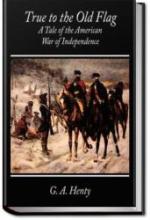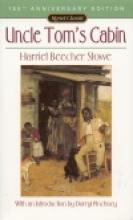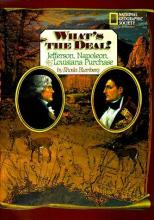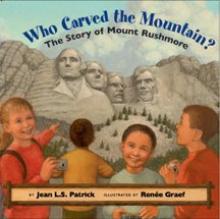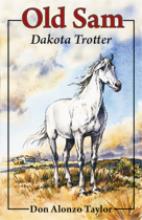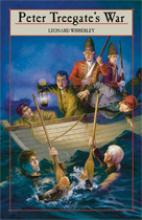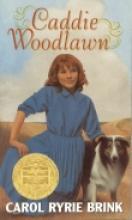United States
True to the Old Flag
Uncle Tom's Cabin
The story is about slavery in America. It follows the lives of two slaves in detail, Eliza and Uncle Tom, and introduces us to a great many more slaves and masters and their stories. The two belong to the same master in Kentucky. When the master falls on hard times (from his own inability to manage his estate) he ends up making a deal to sell these two - despite the fact that both of them are rather dear to him and his family. Getting wind of this Eliza decides to run for safety with her son while Uncle Tom allows himself to be taken away from his wife and young children. Eliza risks her life to save her child - running across the ice floes of a partially frozen Ohio river to escape - then finds her way along an underground network. (I won't tell you how her story comes out.) Uncle Tom is sold and resold. He is steadfast in his faith throughout - though not unchanging. Moreover, he affects those who he meets along the way.
This book is written in a very foreign style. - at least to the modern reader. Chronologically Mrs. Stowe's style fits somewhere between that of the crafters of the Constitution and that of Mark Twain. But it is not so easy to put it into any other category. Her own narration is a bit archaic, overtly Christian, sometimes sarcastic, sometimes patronizing, and yet very broad minded. She calls you "gentle reader". She says "now don't you think that is fair?" when she expects you to come to the opposite conclusion. And yet she sees clearly through all the haze of the issue - i.e. the "shades of grey" everyone loves to talk about when they can't bear to say right vs. wrong. And she does more - she presents us with characters who take various positions on the slavery issue. Not just "it's right" and "it's wrong" - but a wide variety of views. She allows them ample voice and reason to discourse their whole argument; she does not make them straw men; she does not mitigate or twist their ideas; she lays out the best cases for and against - and from several different angles. In the midst of this she demonstrates the effects on the PEOPLE who are subjected to the system - those who are the masters as well as those who are the slaves. It is incredibly revealing to have the whole gamut - the entire conversation - all in one accessable story. And it is incredibly convincing!!! Which is why, as legend has it, Abe Lincoln, when introduced to her for the first time declared, "So you're the little lady responsible for this big war."
This book ought to be read for a lot of different reasons.
1) Arguments aren't just fights. When properly done they are tools to get at the truth. This book shows how to argue in the best sense. Reasonable people may have views that are wrong - and can be changed by convincing. (Admittedly, most of those in this book are not, ultimately, convinced - but some are - it's good to see).
2) Style! You have to get a taste of this style of hers. It is a peculiar dish that we rarely see set before us these days (how much early 19th century do you typically read!!).
3) Faith. Uncle Tom has faith in God. It grows stronger and better through his trials. And, it has effects on those he meets and deals with to different degrees and in different ways. (That's realistic.)
4) It shows us that a story can be an extremely convincing form of persuasion.
5) There is a lot revealed about the fundamental nature of man and his free will by exploring the effects of stifling that free will via enslavement. Her characters vary wildly in their reaction to the invisible wall between master and slave. The slaves will react, contort and re-form (or de-form) themselves to this unnatural order. The slave owners must likewise be ignorant or somehow justify their actions. To the author's credit we see that the justification is sometimes wicked or perverted and sometimes just well-meaning but ultimately flawed reasoning.
6) One thing that kind of percolates up from 5) is that there is a difference between the will and the intellect. Philosophers have argued about this for millenia. Many people believe that if someone knows what the good thing is they will naturally want to do it. But knowing and doing ARE different. And some may know what is good but not do it. Some may even want to do what is not good and through an underhanded twist of the will convince themselves (and really THINK they know) that the bad is good. The sooner a person can grasp the difference between the intellect and the will the more they will be able to direct their own thoughts and actions maturely, profitably and honorably.
7) Believe it or Not! This book has some incredible (as in not believable) events. However, Mrs. Stowe, it turns out had done a lot or research. Most of the events were gathered from real events. Even the more incredible ones such as Eliza crossing the river. - Don't try that at home!!!
Age level: High School Freshman +/- a year. Kleenex required.
Many editions available
What's The Deal?
National Geographic published some longer, generously illustrated non-fiction picture books, and this is one of them. A great aid to any homeschool's History curriculum. We have picked up several different titles from the library like this one. I, for one, learned a lot! From their site:
This entertaining saga brings a legendary land deal to life. Over 60 reproductions of art from the period, a cast of characters, maps, a timeline, endnotes, a bibliography, and index give young readers all the resources they need to understand the period in which the Purchase took place.
Whigs and Tories
Who Carved the Mountain?
Our family was delighted to visit Mount Rushmore recently, along with several other Love2Learn families. Since we live in South Dakota, Mount Rushmore books have prominent and permanent displays in our library system's many branches. Who Carved the Mountain saw the inside of our weekly library bag many times and became our favorite Mount Rushmore picture book. When I saw the warm, familiar cover at the Mount Rushmore gift shop's window, I could not resist it: I went inside resolutely and by the time I came out, our family was the proud owner of a copy of this beautifully illustrated volume!
Who Carved the Mountain features the many people associated with Mount Rushmore in attractive, friendly and educational double-spread pages. There are twelve of these, depicting Doane Robinson who first thought of the project, artist Borglum, the four presidents, the project's workers and more. Pictured in warm colors and rich in detail, they are also described in verse and on an interesting-tidbits-full sidebar. The text on each page is just enough, providing both brief enough descriptions and meaty enough content. The verses are told in a first person perspective:
The Pointer
I am the pointer
I make the marks on the mountainFirst, I work in Borglum’s studio
I measured the models of our presidents
And I multiplied each number by twelve.I loved the math, the complicated math.
The mouths would be eighteen feet wide!Next I climbed Mount Rushmore.
With a pointing machine and a paintbrush
I marked measurements on the rock.The workers knew exactly where to drill
Because I made the marks on the mountain.Who drilled the holes in the mountain?
Each set of verses lead up to next person to be described: the stone carver, the "power man", the presidents, Borglum and his son--they are all there. The sidebars offer a biographical sketch and curious and interesting facts about each one. Illustrator Renee Graef, known to Catholic homeschoolers as the Laura Ingalls' picture books illustrator who captured so well the original Garth Williams pictures, and from Melissa Wiley's books' covers, did a fabulous job bringing the feeling of the Black Hills to her illustrations, as well as the historical and complex technical details of the carving. Her portraits of the four presidents sitting by their desks are also warm, rich and just lovely to enjoy.
Winter Danger
As an adventure and historical tale, this is a great read, but it offers a deeper level too. The story touches upon some very essential points about the purpose of civilization, family and loving one's neighbor. This is a fairly easy read for 2nd or 3rd grade and up but would also make a great read-aloud.
Old Sam, Dakota Trotter
Peter Treegate's War
Because of the impersonal nature of the battle scenes and the need for a mature understanding of the issues surrounding war, the suggested reading level is high school.
Caddie Woodlawn
The story is written by Caddie's granddaughter who, orphaned at a young age, was actually raised by Caddie and grew up listening to these stories from her grandmother's childhood. This grandmotherly wisdom shows through in the book in the way the stories were selected and told.
Our family recently enjoyed visiting Caddie Woodlawn Historic Park, near the Minnesota border in Western Wisconsin. It's a very simple place where you can walk through Caddie's house (no tourist guides or anything - you just walk through the empty house on your own) and visit a memorial to Caddie's sister Mary who is buried in an unknown place on the property. Reading this book (and visiting Caddie's house) were good opportunities for me as a mother to reflect on some of John Senior's ideas from the Restoration of Christian Culture on the benefits of a simpler life.
On a related note: I found the movie (of the same name) done by Wonderworks terribly disappointing. Most notably, they took one of my (and apparently the author's) favorite characters - the noble and loving Robert Ireton, and turned him into a mean and cowardly character.

